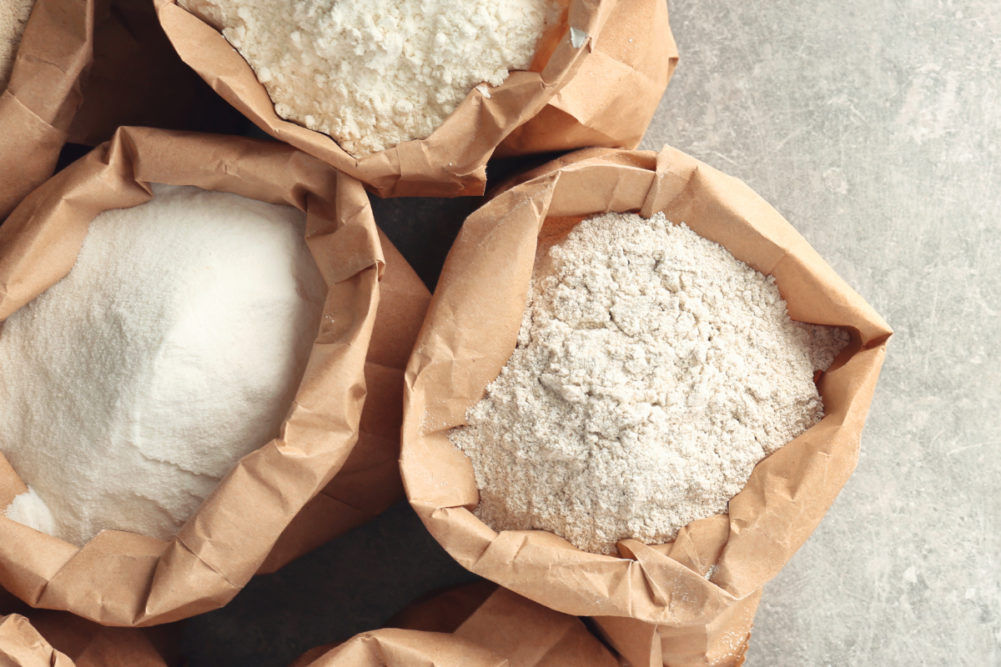 Among issues preoccupying food business executives during the COVID-19 pandemic, none has been more pressing than identifying which shifts in consumer demand will endure. Valuable insights into the larger picture emerge in the most recent flour production statistics from the US Department of Agriculture. The data at the same time underscore the challenge of precisely divining where underlying trends are headed.
Among issues preoccupying food business executives during the COVID-19 pandemic, none has been more pressing than identifying which shifts in consumer demand will endure. Valuable insights into the larger picture emerge in the most recent flour production statistics from the US Department of Agriculture. The data at the same time underscore the challenge of precisely divining where underlying trends are headed.
At first blush, the top-line figure for January-March 2021 flour production was worrisome. At 103,634,000 cwts, first-quarter production was down 4,543,000 cwts, or 4.2%, from a year earlier. It has been almost two decades since flour production fell by 4.5 million cwts in a quarter. In fact, the drop from a year ago was largely a reversal of a pandemic-fueled surge of flour demand concentrated in March 2020. First-quarter production last year was a record and was up 4.4% from the first quarter of 2019. Millers attributed the jump last March both to a surge in demand from bakers of sliced bread combined with demand from bakers who supply foodservice establishments, before the spigot shut off during the final days of March and into April.
That the first quarter of 2021 was a reversal of last year’s January-March is evident when comparing the figure with the pre-pandemic first quarter 2019. Production in that period was 103,600,000 cwts — almost identical (within 0.3%) with production in January-March this year.
Many millers are not ready to concede overall demand for flour will not be higher after the pandemic than before. Still, the flat overall demand appears to support the idea that gains in certain product segments, such as sliced bread sold in supermarkets, mostly offset other categories, such as buns sold to quick-service restaurant chains. Noting that overall bread sales in 2020 were up about 10%, an analyst recently advised bakers to aim higher. After all, the 10% gains were modest compared with the far stronger growth rates generated in sliced cheese, deli lunchmeat and jams/jellies. Still, the flat flour production versus 2019 suggests millers and bakers should remain mindful of the gravitational forces that are at work and likely to continue bringing down sales of baked foods.
A particularly tough lesson appears to have played out in the market for family flour. After encountering demand through most of 2020 stronger than anyone in the industry could have imagined with grocery shelves bare repeatedly, retailers foresaw another swell in home baking during the 2020 holidays and stockpiled family flour in anticipation. Seasonal demand fell far short of expectations, and retailers have been working down stocks ever since, resulting in a near shut off in family flour demand in certain markets. While the market likely will benefit from consumers who developed home baking skills while shut in their homes, millers increasingly believe family flour sales largely will return close to pre-pandemic trendlines.
The whole wheat flour production segment of the flour market had been drifting downward well before the pandemic began, a trend that was not interrupted in 2020. Millers initially speculated that weakness last year may have been driven by baker decisions to temporarily eliminate slower selling stock-keeping units, including whole wheat bread, early in the pandemic. But as the full complement of bread SKUs has been returned to store shelves, whole wheat flour sales have remained weak. Whether whole wheat flour revives when schools reopen this fall remains to be seen.
A look at the 12-month rolling average for overall flour production for the period ended March 31 offers a cautionary note. Production was 421,254,000 cwts, down 1.3% from a year earlier and the smallest for any 12-month period dating back at least to 2013. No doubt there are pockets of strength in flour shipments, and how demand may evolve going forward is impossible to know. Still, aggregate flour production data point to scant, if any, overall growth in flour-based foods.






